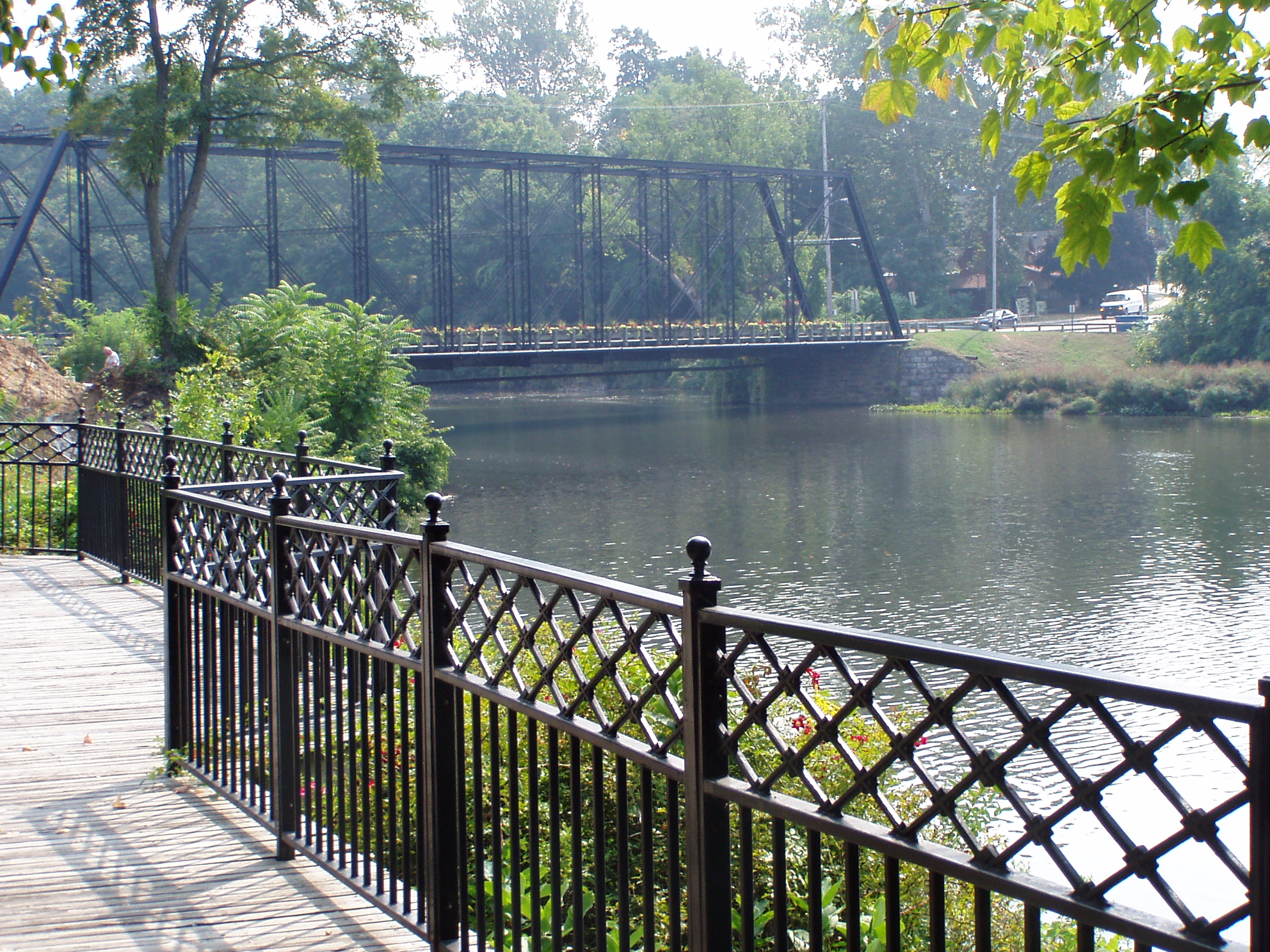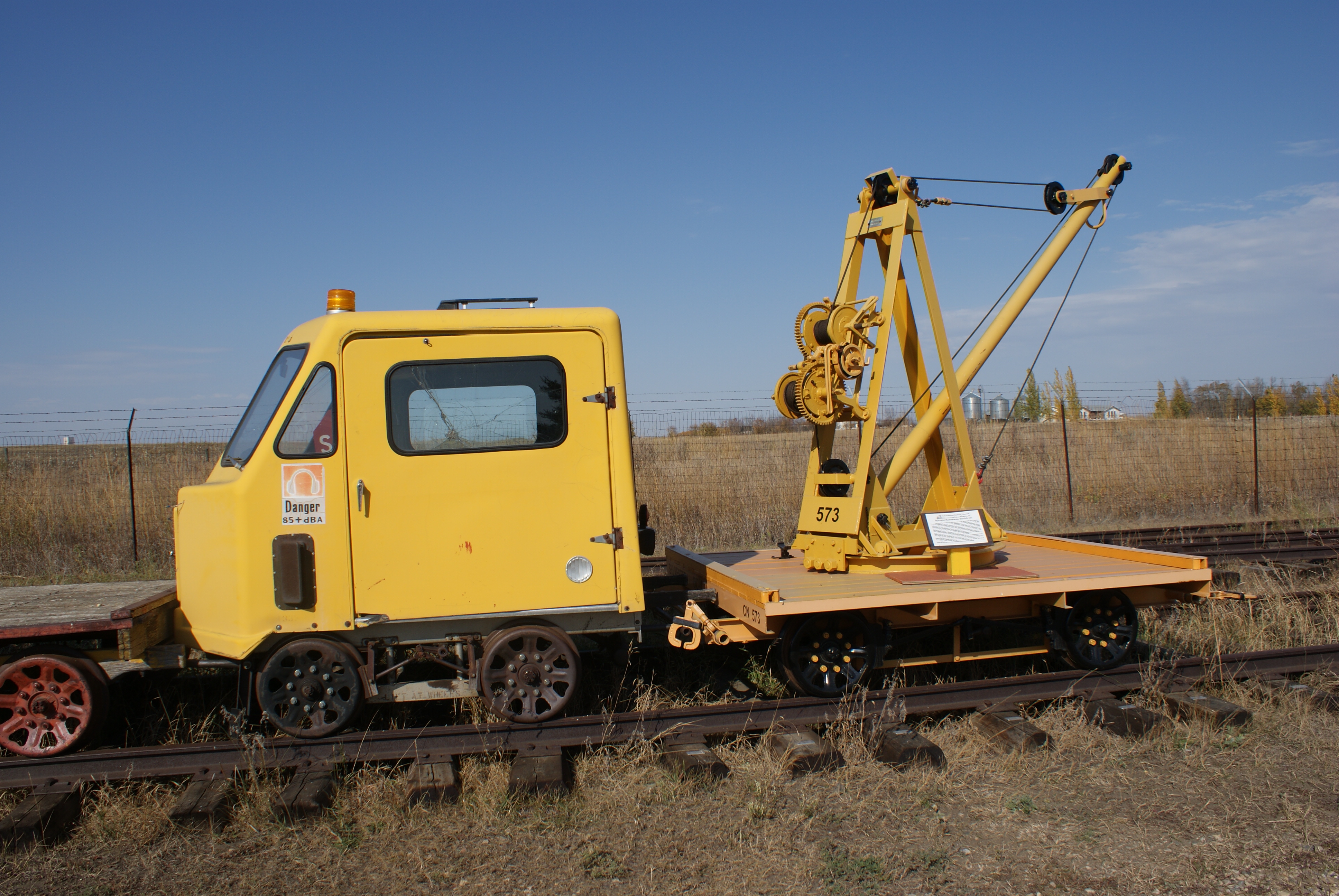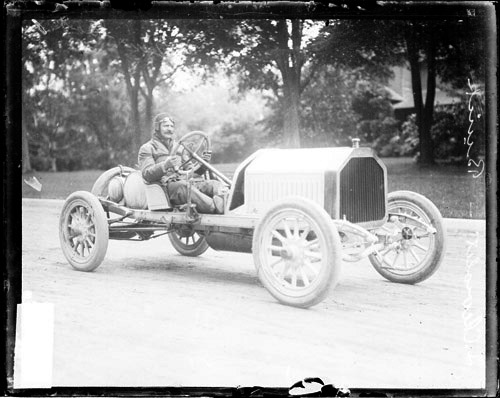|
Allegan, Michigan
Allegan ( ) is a city and the county seat of Allegan County, Michigan Its population was 5,222 at the 2020 United States census, 2020 census. It is located southwest of Grand Rapids and northwest of Kalamazoo, both via US 131. It lies within Allegan Township, Michigan, Allegan Township but is administratively autonomous. History The men after whom Allegan's downtown streets were named – Elisha Ely, Samuel Hubbard, Charles Christopher Trowbridge, Pliny Cutler, and Edmund Monroe – patented land in the area in 1833. They considered the site a prime location for industry, due to its potential for water power (since it straddled the Kalamazoo River) and water bound transportation. By 1835, a dam and sawmill had been established. Allegan was named in a neologism by Michigan historian Henry Rowe Schoolcraft in 1837 to sound like a Native American (U.S.), Native American word. Land was purchased from government to form the downtown business district; village organization came in 18 ... [...More Info...] [...Related Items...] OR: [Wikipedia] [Google] [Baidu] |
City (Michigan)
The state of Michigan is largely divided in the same way as many other U.S. states, but is distinct in its usage of charter townships. Michigan ranks 13th among the fifty states in terms of the number of local governmental entities. The state is divided into 83 counties, and further divided into 1,240 townships, 280 cities, and 253 villages. Additionally, the state consists of 553 school districts, 57 intermediate school districts, 14 planning and development regions, and over 300 special districts and authorities.''Michigan's System of Local Government'' ''Michigan Manual 2005-2006'', Chapter VIII, Introduction, pp. 715-718. Accessed May 15, 2007. County Michigan is divided into 83 counties, the primary administrative division ...[...More Info...] [...Related Items...] OR: [Wikipedia] [Google] [Baidu] |
Kalamazoo
Kalamazoo ( ) is a city in Kalamazoo County, Michigan, United States, and its county seat. At the 2020 United States census, 2020 census, Kalamazoo had a population of 73,598. It is the principal city of the Kalamazoo–Portage metropolitan area in southwestern Michigan, which had a population of 261,670 in 2020. One of Kalamazoo's most notable features is the Kalamazoo Mall, an outdoor pedestrian shopping mall. The city created the mall in 1959 by closing part of Burdick Street to automobile traffic, although two of the mall's four blocks have been reopened to auto traffic since 1999. Kalamazoo is home to Western Michigan University, a large public university, Kalamazoo College, a private liberal arts college, and Kalamazoo Valley Community College, a two-year community college. Name origin Originally known as Bronson (after founder Titus Bronson) in the township of Arcadia, the names of both the city and the township were changed to "Kalamazoo" in 1836 and 1837, respectiv ... [...More Info...] [...Related Items...] OR: [Wikipedia] [Google] [Baidu] |
Humid Continental Climate
A humid continental climate is a climatic region defined by Russo-German climatologist Wladimir Köppen in 1900, typified by four distinct seasons and large seasonal temperature differences, with warm to hot (and often humid) summers, and cold (sometimes severely cold in the northern areas) and snowy winters. Precipitation is usually distributed throughout the year, but often these regions do have dry seasons. The definition of this climate in terms of temperature is as follows: the mean temperature of the coldest month must be below or depending on the isotherm, and there must be at least four months whose mean temperatures are at or above . In addition, the location in question must not be semi-arid or arid. The cooler ''Dfb'', ''Dwb'', and ''Dsb'' subtypes are also known as hemiboreal climates. Although amount of snowfall is not a factor used in defining the humid continental climate, snow during the winter in this type of climate is almost a guarantee, either intermitte ... [...More Info...] [...Related Items...] OR: [Wikipedia] [Google] [Baidu] |
Köppen Climate Classification
The Köppen climate classification divides Earth climates into five main climate groups, with each group being divided based on patterns of seasonal precipitation and temperature. The five main groups are ''A'' (tropical), ''B'' (arid), ''C'' (temperate), ''D'' (continental), and ''E'' (polar). Each group and subgroup is represented by a letter. All climates are assigned a main group (the first letter). All climates except for those in the ''E'' group are assigned a seasonal precipitation subgroup (the second letter). For example, ''Af'' indicates a tropical rainforest climate. The system assigns a temperature subgroup for all groups other than those in the ''A'' group, indicated by the third letter for climates in ''B'', ''C'', ''D'', and the second letter for climates in ''E''. Other examples include: ''Cfb'' indicating an oceanic climate with warm summers as indicated by the ending ''b.'', while ''Dwb'' indicates a semi-Monsoon continental climate, monsoonal continental climate ... [...More Info...] [...Related Items...] OR: [Wikipedia] [Google] [Baidu] |
Climate
Climate is the long-term weather pattern in a region, typically averaged over 30 years. More rigorously, it is the mean and variability of meteorological variables over a time spanning from months to millions of years. Some of the meteorological variables that are commonly measured are temperature, humidity, atmospheric pressure, wind, and precipitation. In a broader sense, climate is the state of the components of the climate system, including the atmosphere, hydrosphere, cryosphere, lithosphere and biosphere and the interactions between them. The climate of a location is affected by its latitude, longitude, terrain, altitude, land use and nearby water bodies and their currents. Climates can be classified according to the average and typical variables, most commonly temperature and precipitation. The most widely used classification scheme is the Köppen climate classification. The Thornthwaite system, in use since 1948, incorporates evapotranspiration along ... [...More Info...] [...Related Items...] OR: [Wikipedia] [Google] [Baidu] |
Cornelian Automobile
The Cornelian was a 1914 American automobile built expressly for racing. It had chain drive and was the smallest such configuration to be raced at the Indianapolis Speedway. Manufacture The 1914 Cornelian was manufactured by Howard E. Blood (of the Allegan, Michigan-based Blood Brothers Machine Company), who had joined forces with Swiss racecar driver Louis Chevrolet. Chevrolet used a Cornelian to qualify for the 1915 Indy 500 race, with a qualifying speed of . Chevrolet did not finish the race, having to drop out on the 77th lap when an engine valve failed (he placed 20th in the results). However, the appearance was good for business, and orders came into Blood's office. However, only a few units had been produced when Blood halted production. The cycle car was powered by a 4 Cylinder Sterling engine and boasted a light weight of displacing 103 cubic inches (1.7 L). The automobile body was monocoque; the rear wheels had independent suspension, and the front wheels were m ... [...More Info...] [...Related Items...] OR: [Wikipedia] [Google] [Baidu] |
Louis Chevrolet
Louis-Joseph Chevrolet (December 25, 1878 – June 6, 1941) was an American racing driver, mechanic and entrepreneur who co-founded the Chevrolet, Chevrolet Motor Car Company in 1911. Early life Louis-Joseph Chevrolet was born on December 25, 1878, in La Chaux-de-Fonds, a center of watchmaking in northwestern Switzerland. He was the second child of Joseph-Félicien Chevrolet, a watchmaker, and Marie-Anne Angéline Mahon. His family was originally from Bonfol, now in the canton of Jura. In 1887, Chevrolet left Switzerland along with his father to settle in Beaune, France. There, as a young man, he developed his mechanical skills and interest in bicycle racing. During this period, Chevrolet invented a wine pump, which he built from a defective one-cylinder motor mounted on a three-wheeled bicycle. Career Early career Chevrolet worked at the Roblin mechanics shop in Beaune from around 1889 to 1899. He then moved to Paris, where he worked at various mechanics shops, betwe ... [...More Info...] [...Related Items...] OR: [Wikipedia] [Google] [Baidu] |
Blood Brothers Machine Company
Blood Brothers Machine Company was a universal joint manufacturing firm with factories in Allegan and Kalamazoo, Michigan. Maurice, Clarence and Charles Blood and their nephew Howard Blood started a bicycle factory in Kalamazoo in the early 1900s. In 1914, the Blood Brothers purchased the Allegan Mirror Company and ventured into the racing car industry with the production of the unique chain drive Cornelian, one of which was driven by Louis Chevrolet in the 1915 Indy 500 race. Fewer than 100 of these vehicles were produced. The company turned its Allegan operation into Blood Brothers Machine Company. In 1936 the company became a wholly owned subsidiary of the Standard Steel Spring Company of Coraopolis, Pennsylvania. In 1975, it in turn became part of the Rockwell International operation. Rockwell was in the business of building aircraft for the US Air Force The United States Air Force (USAF) is the Air force, air service branch of the United States Department of Defens ... [...More Info...] [...Related Items...] OR: [Wikipedia] [Google] [Baidu] |
Native American (U
Native Americans or Native American usually refers to Native Americans in the United States Native Americans (also called American Indians, First Americans, or Indigenous Americans) are the Indigenous peoples of the Americas, Indigenous peoples of the United States, particularly of the Contiguous United States, lower 48 states and A .... Related terms and peoples include: Ethnic groups * Indigenous peoples of the Americas, the pre-Columbian peoples of North, South, and Central America and their descendants * Indigenous peoples in Canada ** First Nations in Canada, Canadian Indigenous peoples who are neither Inuit nor Métis ** Inuit, Indigenous peoples inhabiting the Arctic and subarctic regions of Greenland, Labrador, Quebec, Nunavut, the Northwest Territories, and Alaska. ** Métis in Canada, specific cultural communities who trace their descent to early communities consisting of both First Nations people and European settlers * Indigenous peoples of Costa Rica * Indi ... [...More Info...] [...Related Items...] OR: [Wikipedia] [Google] [Baidu] |
Henry Rowe Schoolcraft
Henry Rowe Schoolcraft (March 28, 1793 – December 10, 1864) was an American geographer, geologist, and ethnologist, noted for his early studies of Native American cultures, as well as for his 1832 expedition to the source of the Mississippi River. He is also noted for his major six-volume study of Native Americans commissioned by Congress and published in the 1850s. He served as United States Indian agent in Michigan for a period beginning in 1822. During this period, he named several newly organized counties, often creating neologisms that he claimed were derived from indigenous languages. There he married Jane Johnston, daughter of a prominent Scotch-Irish fur trader and an Ojibwe mother, who was the high-ranking daughter of Waubojeeg, a war chief. Jane lived with her family in Sault Ste. Marie, Michigan. She was bilingual and educated, having grown up in a literate household. Jane taught Schoolcraft the Ojibwe language and much about her maternal culture. They had seve ... [...More Info...] [...Related Items...] OR: [Wikipedia] [Google] [Baidu] |
Neologism
In linguistics, a neologism (; also known as a coinage) is any newly formed word, term, or phrase that has achieved popular or institutional recognition and is becoming accepted into mainstream language. Most definitively, a word can be considered a neologism once it is published in a dictionary. Neologisms are one facet of lexical innovation, i.e., the linguistic process of new terms and meanings entering a language's lexicon. The most precise studies into language change and word formation, in fact, identify the process of a "neological continuum": a '' nonce word'' is any single-use term that may or may not grow in popularity; a '' protologism'' is such a term used exclusively within a small group; a ''prelogism'' is such a term that is gaining usage but is still not mainstream; and a ''neologism'' has become accepted or recognized by social institutions. Neologisms are often driven by changes in culture and technology. Popular examples of neologisms can be found in science, ... [...More Info...] [...Related Items...] OR: [Wikipedia] [Google] [Baidu] |
Kalamazoo River
The Kalamazoo River is a river in the U.S. state of Michigan. The river is long from the junction of its North and South branches to its mouth at Lake Michigan, with a total length extending to when one includes the South Branch.U.S. Geological Survey. National Hydrography Dataset high-resolution flowline dataThe National Map , accessed May 19, 2011 The river's watershed drains an area of approximately and drains portions of ten counties in southwest Michigan: Allegan, Barry, Eaton, Van Buren, Kalamazoo, Calhoun, Jackson, Hillsdale, Kent and Ottawa. The river has a median flow of at New Richmond, upstream from its mouth at Saugatuck and Douglas. The north and south branches of the Kalamazoo River originate within a few miles of each other. The south branch begins near North Adams in Moscow Township in northeastern Hillsdale County and flows north and west through Homer before joining the north branch at the forks of the Kalamazoo River in Albion. The North Branch ... [...More Info...] [...Related Items...] OR: [Wikipedia] [Google] [Baidu] |






